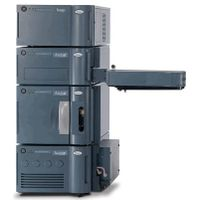Waters - ACQUITY UPLC M-Class System with 2D Technology
Expand the dynamic range of your analysis with 2D separations.
- High-resolution in both dimensions by exploiting the wide-ranging ionic and hydrophobic structure of peptides
- Better protein identifications, quantification, and sequence coverage
- Improved separation, method generation wizards, and enhanced data algorithms
Active Questions & AnswersAsk a Question
There are no current Discussions
UHPLC Systems Service ProvidersView All (7)
Documents & Manuals
There are no Documents or Manuals available.
Features of ACQUITY UPLC M-Class System with 2D Technology
Comprehensive 2D - Expanding the impact. Conventional 2D-LC uses ion exchange (IEX) followed by reversed- phase (RP). Any IEX approach will use salt-containing buffers that can cause ionization background and fouling problems if they enter a mass spectrometer (MS). Since IEX separations are based solely on the charge of the peptide, the IEX dimension often results in poor chromatographic resolution with peptides appearing in multiple fractions, making data interpretation difficult.
This improved 2D approach uses RP at pH 10 in the first dimension, followed by RP at pH 2 in the second dimension for results that far exceeds those of conventional IEX methodologies.
Secure Identifications for Best-in-Class Reproducibility An increased number of secure identifications is shown as a function of 2D-LC resolution. Both reproducible and incremental identifications of proteins based on 2D-LC can be seen.
High resolution in both dimensions. When ion exchange is used as the first separation dimension, poor resolution and bleed between fractions could occur. Using a highly resolving support in the first step provides you with better information in the last step. A reversed phase support at pH 10, followed by a sub-2-micron separation at lower pH, useful, orthogonal separations that yield high quality data is obtained.
Increased resolution equals better protein identifications. The 2D-LC enables: Identification of twice as many proteins more securely based Recovery of more peptides Greater protein coverage with high confidence in results
General Specifications
There are no General Specifications available.

